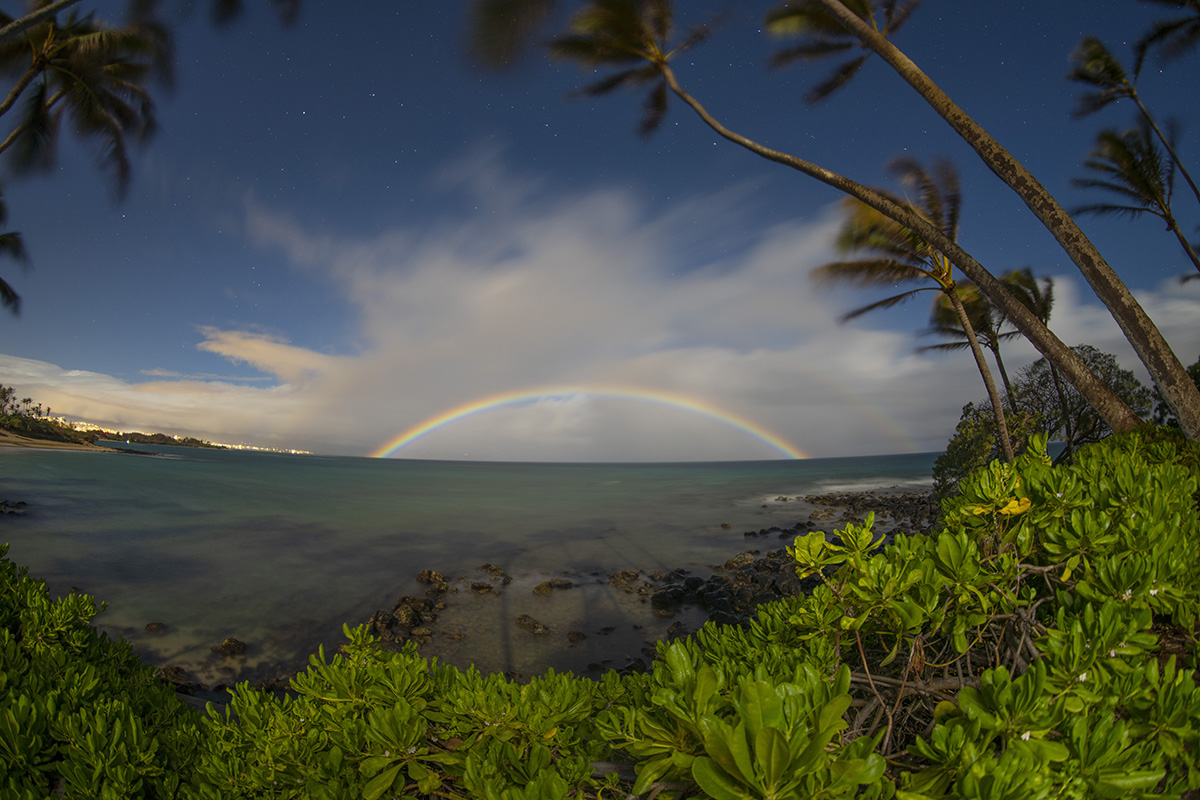A Bird’s-Eye View of Maui
Nick Moran masters aerial landscape photography with the Tamron 70-300mm Di III RXD zoom.
Share the article:
More Photo Tips | Video Gallery | Photo Gallery | Enewsletter sign-up
By Jenn Gidman
Images by Nick Moran
Photography didn’t find its way into Nick Moran’s life until a few years after he and his wife, Magen, moved in 2010 from the Pacific Northwest to Maui. “After the move, I worked first as a kitesurfing/standup paddle instructor while accumulating enough flight time to get a full-time pilot job,” he says. “I’d earned my helicopter flight instructor certificate right before we moved to Hawaii. My dad was in the Navy and I flew airplanes growing up, so aviation is in my blood.”
Nick’s friend Eric Gilbert had purchased a helicopter, so Nick taught him to fly it, and from there they launched Maui Helicopter Academy, the only helicopter flight school on Maui. “After Eric left to become an airline pilot, we bought a Robinson R44 helicopter and launched Go Fly Maui,” he says. “My photography fascination began in 2015, when my brother-in-law let me borrow his DSLR and we started playing with light painting in a hangar full of helicopters.”
From there, Nick’s friend Terry Rowe, who had experience taking pictures at air shows, got him up to speed on the basics of photography, while Terry’s mentor, Michael Gilbert (a Tamron Image Master), helped Nick explore his creative side. “Michael showed me how to look past the obvious and search for the quirky, weird elements that catch your eye,” he says. “Michael also introduced me to the Tamron family of lenses so I could test out different styles of shooting from the helicopter.”
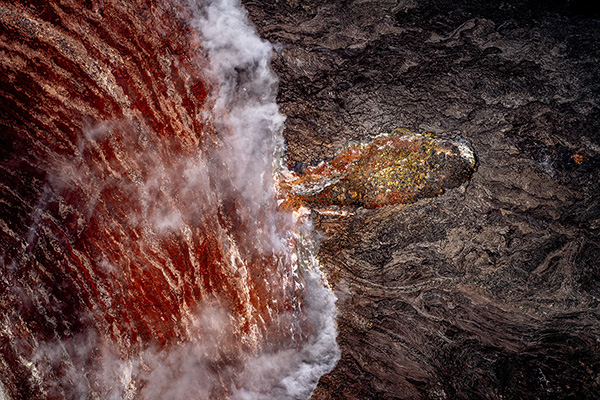
70-300mm (97mm), F/4.5, 1/3200, ISO 200
Click image to view larger
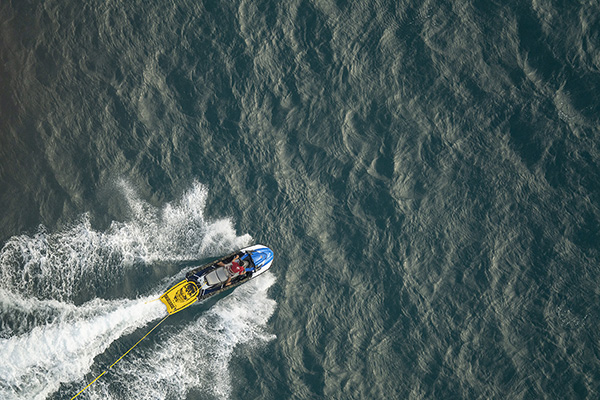
70-300mm (300mm), F/6.3, 1/2500, ISO 2500
Click image to view larger
Today, Go Fly Maui offers not only flight instruction, but also an Aerial Photography Academy for photographers and videographers of all skill levels. And these days, Nick is relying on the Tamron 70-300mm Di III RXD telephoto zoom lens for his Sony mirrorless camera system for his own photos. “When you shoot from an aircraft, you don’t want to be swapping lenses and dealing with a bunch of gear,” he says. “You need everything to be as simple and clean as possible, so you can focus on whatever’s flying past you at 100 miles per hour. The 70-300 is that special lens for me. One of the best things about it is how ridiculously lightweight it is for the type of focal length you’re getting. Weight is a big deal for the pilots—the lighter you are, the more you’ll be able to do with the helicopter.”
The fast autofocus, wide range of focal lengths, and reach on the 300mm end ensures Nick never misses a shot. “Shooting out of a helicopter is quite a challenge when it comes to picking out a subject,” he says.” There’s so much that’s visible, and you have to try to resist the urge to shoot it all in one frame. The 70-300 helps me cut through the clutter and nail the shot I want. Plus, you’re always going to get vibration shooting from a helicopter, and this lens works wonderfully with my Sony camera’s image stabilization system, for super-sharp images even at slower shutter speeds.”
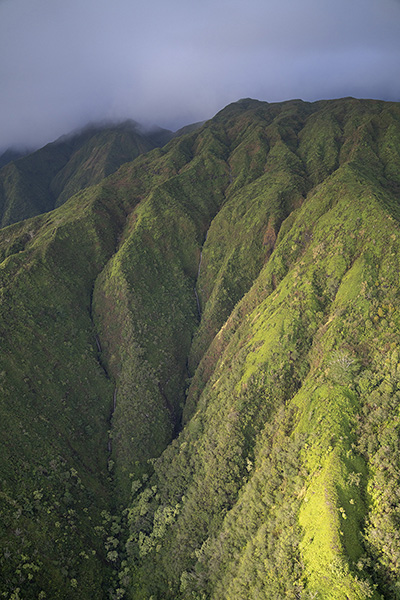
70-300mm (97mm), F/4.5, 1/3200, ISO 1250
Click image to view larger
Once he started taking pictures, Nick realized why he was drawn to it. “Aerial landscape photography is all about showcasing that bird’s-eye view that’s hardly seen,” he says. “A lot of people take photos from tour aircraft in Hawaii, but everyone is shooting documentary-style photos—basically, ‘we were here, we did this’ type of shots. I prefer to find something artistic in a scene, or something that’s unique and has a story to it. I love to share that perspective with people.”
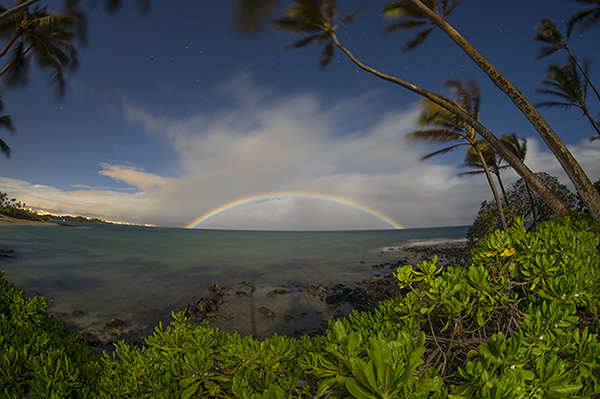
70-300mm (70mm), F/8, 15 sec., ISO 2000
Click image to view larger
Because artificial lighting isn’t part of his in-the-air workflow, Nick is at the mercy of whatever available light shows up on any particular day. “The wonderful thing about living on an island, though, is that if the lighting isn’t great on one side of Maui, you can just fly to the other side,” he says. “If I’m photographing anything in the water, I’ve found that late morning and early afternoon allows the blues and greens to emerge with the least amount of reflection. That’s especially important when I’m taking pictures of whales and sharks, where I need to be able to see into the water.”

70-300mm (300mm), F/6.3, 1/2500, ISO 160
Click image to view larger
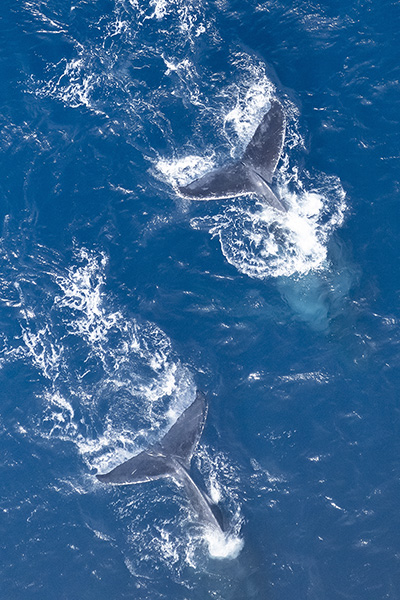
70-300mm (300mm), F/6.3, 1/3000, ISO 1250
Click image to view larger
All of Go Fly Maui’s photo flights are “doors off,” so customers don’t have to take pictures through glass. “If you do go on a photo flight where you have to shoot through windows, I highly recommend wearing dark clothes and bringing a dark towel to put around the end of your lens to block out any reflections from anything inside the cockpit,” Nick says.
Photographing from a helicopter presents other challenges. “The movement is the biggest issue,” Nick says. “You can get some vibration from the main rotor blades above you, which our mechanics try to keep to a minimum by tracking and balancing the blades. How fast we’re flying also makes a difference. If we’re photographing another aircraft—what’s known as an ‘air-to-air’ session—then there’s going to be a lot of wind wiggle with the camera trying to shoot out the open door.”
To control some of that wind, Nick will often close the opposite door of the helicopter to keep the airflow from working its way through the cabin. “As for stabilizing the camera, I just get a good hold on the lens barrel, like I’m shooting a rifle, and do my best to serve as the shock absorber,” he says.
Nick’s baseline settings on any given day include shooting in Shutter Priority with an ISO capped at 2000, a shutter speed of 1/2000 sec., and an aperture set as fast as his focal length will allow. “If I’m getting picky, I’ll switch over to manual mode and dial in what I need,” he says. “We were trying to capture blur in the rotor blades during a recent air-to-air shoot with another helicopter, and I was able to get some clear images with a shutter speed of 1/200 sec. and F/6.3 at 300mm.”
Autofocus is essential for this type of photography. “You’re not up close to your subject to get that bokeh,” Nick says. “You usually don’t have time for the fine-tuning you can get with manual focus—you just want to press the button and get that focus down. And the focusing speed of this lens on my Sony is amazingly fast.”
The zoom capabilities of the 70-300 become readily apparent once you’re up in the air. “Everything we're used to seeing as large subjects are now tiny,” Nick says. “You have to have a sharp eye for things that are out of the ordinary, and you have to be quick. The reef shark photo, for instance, took place in three seconds, from the time I spotted it to when my finger pressed the button. I’m often scanning the water in search of a fin poking out of the water a few miles away, or a whale blowing water. Sometimes you have to wait it out and hope you get lucky.”
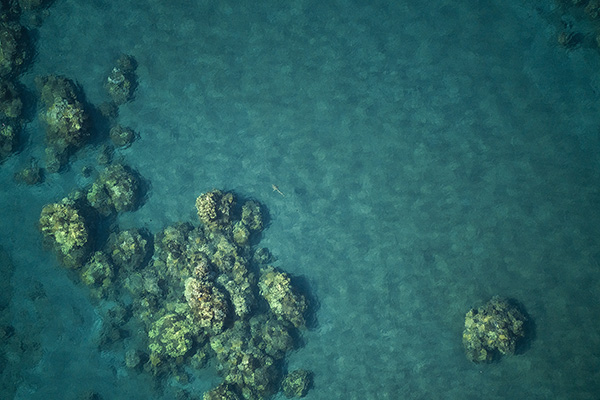
70-300mm (300mm), F/6.2, 1/2000, ISO 3200
Click image to view larger
The ultimate goal, if possible, is to show some scale in your images. “When you’re shooting landscapes of this magnitude and this remote, that can be a real challenge,” Nick says. “Big-wave surf photography is a good way to achieve this. We all know roughly how big a surfer is—it can really put the scene in perspective when there’s a massive 80-foot wave charging down on them. It makes them look like little ants.”
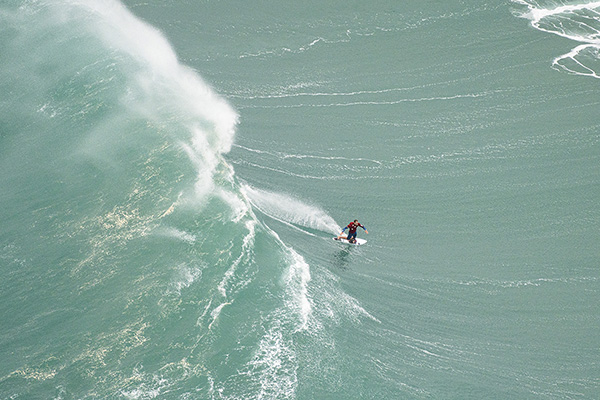
70-300mm (300mm), F/6.2, 1/2500, ISO 1250
Click image to view larger
Check out Nick Moran’s work on Instagram or check out his Go Fly Maui website.
More Photo Tips | Watch Videos | Learn More About Tamron Lenses | Photo Gallery
